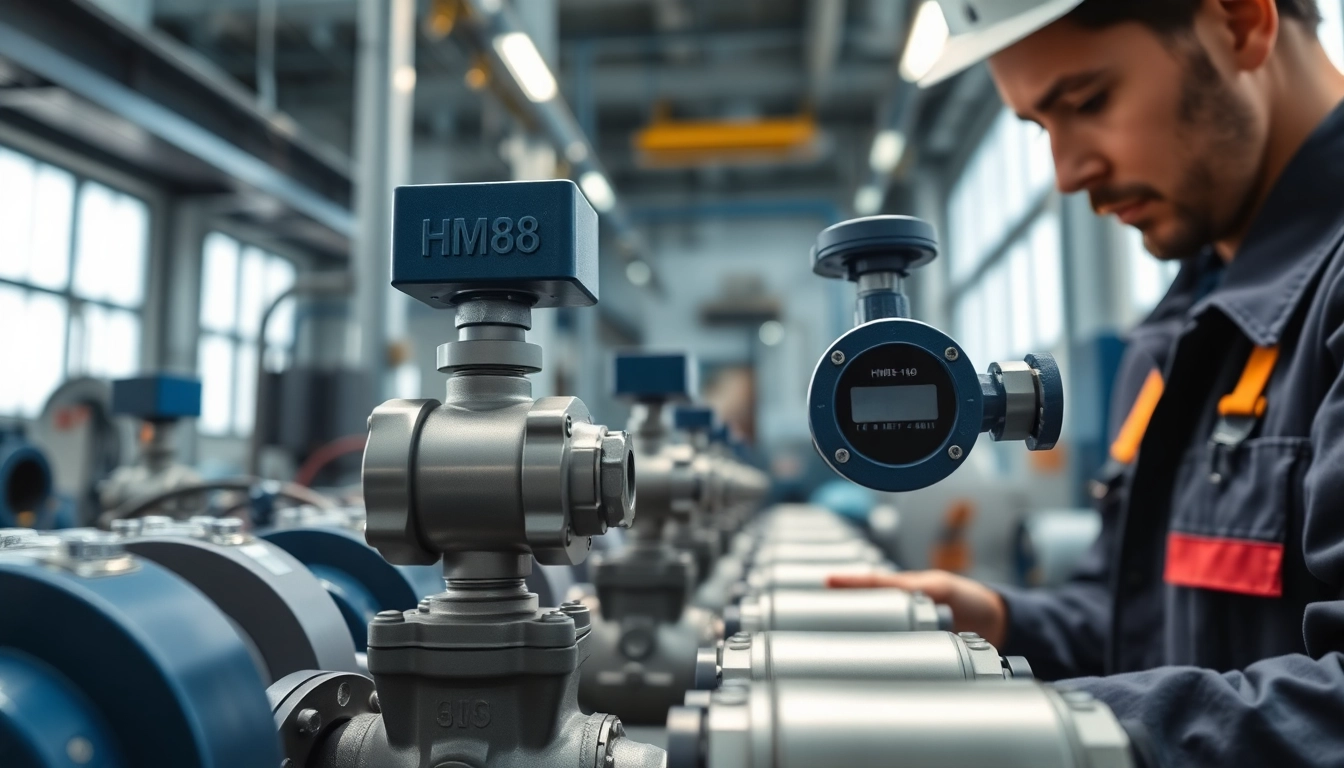Understanding the HM88 Series Valves
The HM88 Series valves represent a significant advancement in manifold valve technology, designed specifically for applications requiring precision and reliability in fluid control. These valves are key components in various industrial settings, ensuring that processes operate efficiently and safely. Incorporating state-of-the-art engineering, the HM88 Series has gained recognition for its robust performance and versatility, catering to the needs of numerous industries. When exploring options, hm88 provides comprehensive insights that can help streamline your operations.
What Are HM88 Series Valves?
The HM88 Series refers to a family of three-valve direct mount manifolds primarily designed for differential pressure transmitters. These valves enable seamless integration with orifice flanges, ensuring minimal leakage and accurate measurements. Unlike traditional valve configurations, the HM88 Series allows for close coupling, which increases the precision of pressure measurements while reducing installation complexities.
Key Features and Benefits
- Compact Design: The HM88 Series boasts a compact form factor, which simplifies installation and minimizes space requirements.
- High Accuracy: The design ensures minimal pressure drop and exceptional measurement accuracy.
- Durability: Constructed from high-quality materials, these valves are built to withstand harsh environments and prolonged use.
- Ease of Maintenance: The user-friendly design allows for straightforward inspection and maintenance, minimizing downtime.
- Versatility: Suitable for a wide range of applications, including oil and gas, chemical processing, and water treatment.
Industries Utilizing HM88 Technology
The versatility of the HM88 Series valves makes them applicable in diverse sectors. They are especially prominent in industries such as:
- Petrochemical: Ensuring precise flow measurement in refineries.
- Water and Wastewater: Monitoring and controlling water treatment processes.
- Pharmaceuticals: Maintaining strict quality control in drug manufacturing.
- Food and Beverage: Ensuring the integrity of fluid systems during production.
Common Challenges with HM88 Valves
Despite their advantages, the implementation of HM88 Series valves can present certain challenges that users must anticipate.
Installation Issues and Solutions
One common installation challenge involves aligning the manifold properly with the transmitter and orifice flange. Misalignment can lead to leaks and inaccuracies. To overcome this, it is crucial to follow precise alignment guidelines and leverage laser alignment tools where necessary.
Maintenance Best Practices for Longevity
To maximize the lifespan of HM88 valves, regular maintenance is essential. This includes:
- Routine inspections for signs of wear and tear.
- Lubricating moving parts as specified by the manufacturer.
- Testing for leaks periodically to ensure system integrity.
Addressing Performance Limitations
Performance limitations may arise due to environmental factors such as temperature fluctuations and corrosive substances. Utilizing protective coatings and selecting materials appropriate for the specific application can mitigate these issues, ensuring optimal performance across various conditions.
Best Practices for Implementing HM88 Valves
Implementing HM88 Series valves effectively requires a systematic approach that emphasizes best practices at every stage of the process.
Step-by-Step Installation Guide
- Prepare the Site: Ensure the installation area is clean and free of debris.
- Check Compatibility: Verify that the valve is compatible with existing systems.
- Align the Components: Align the valve with the orifice flange and differential pressure transmitter.
- Tighten Connections: Use a torque wrench to tighten all connections to the manufacturer’s specifications.
- Test Functionality: Conduct a pressure test to confirm proper function.
Optimizing Performance in Different Environments
Different industrial environments can impact valve performance. For instance, in high-temperature applications, selecting heat-resistant materials is crucial. Additionally, employing thermal insulation can prevent heat loss and ensure reliable performance.
Monitoring and Troubleshooting Techniques
Regular monitoring of valve performance can help identify potential issues before they become critical. Utilizing pressure gauges and flow meters can provide real-time data, allowing for timely adjustments and troubleshooting.
Case Studies: Successful Applications of HM88 Valves
Real-world applications of HM88 valves highlight their effectiveness in various settings and industries.
Industry-Specific Use Cases
In the automotive industry, HM88 valves are utilized in testing facilities to monitor fluid dynamics. These valves provide accurate readings essential for optimizing engine performance and emissions testing.
Comparative Analysis with Competitor Products
When compared to other valve technologies, HM88 valves stand out due to their unique design and enhanced capabilities. For example, while traditional two-valve manifolds may suffice in simple applications, the HM88 Series offers improved safety and efficiency, making it suitable for complex systems.
Lessons Learned from Real-World Implementations
One notable takeaway from the use of HM88 valves in field applications is the importance of regular calibration. Inconsistent measurements can lead to significant operational inefficiencies and safety concerns. Implementing routine calibration schedules can enhance accuracy and reliability in operations.
Future Trends in Valve Technology: Looking Forward to 2025
The landscape of valve technology is continually evolving, driven by advancements in materials science and automation.
Emerging Innovations in HM88 Series
Looking ahead, the HM88 Series is expected to incorporate smart technology, allowing for remote monitoring and control. Integrating IoT capabilities can provide real-time insights into valve performance and system health, enhancing decision-making processes.
Regulatory Changes and Their Impact
As industries strive for greater sustainability, regulatory changes will likely influence the design and manufacturing of valves. New standards may promote the use of eco-friendly materials and energy-efficient designs.
Predictions for the Industry Landscape
By 2025, the valve manufacturing industry is expected to witness increased competition, with a focus on innovation and customer-centric products. Companies that prioritize sustainability and efficiency will likely lead the market, adapting to the evolving demands of their clients.
